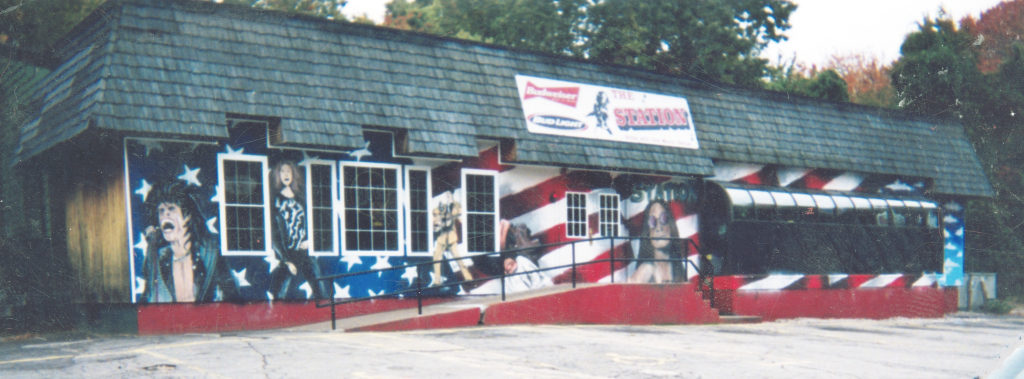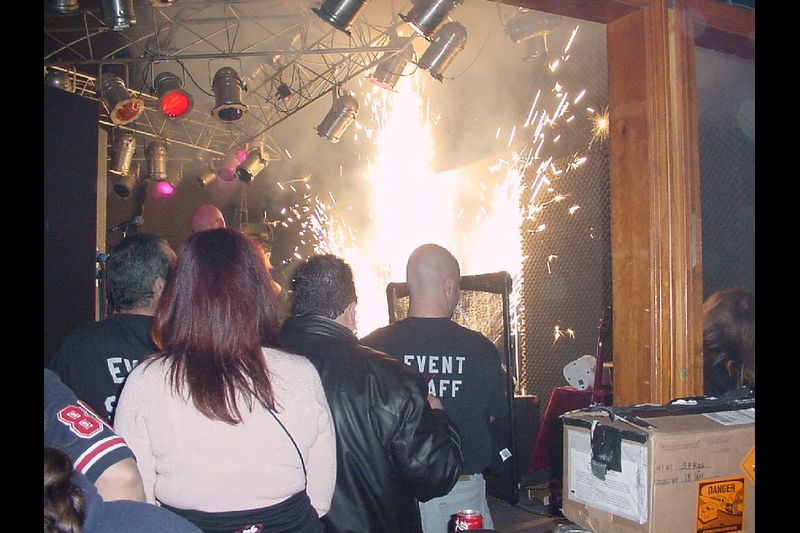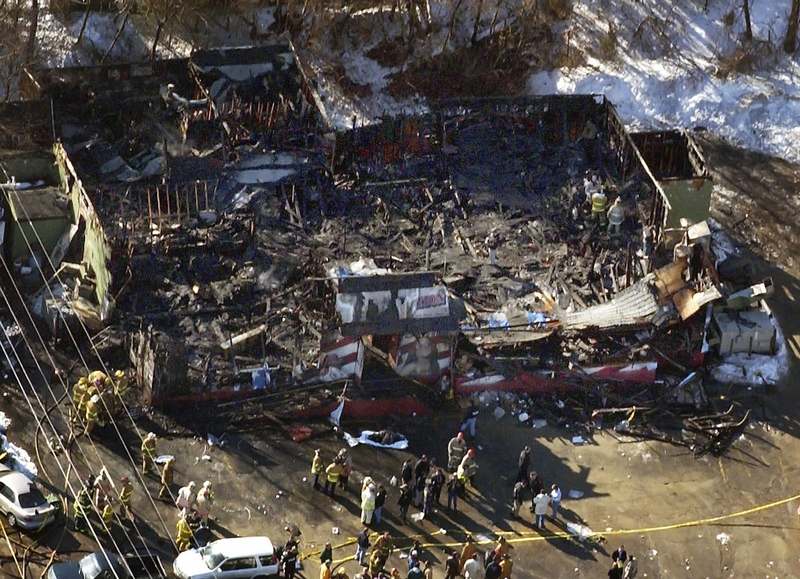
Remembering The Station Nightclub Fire
Lack of adherence to existing fire codes and standards can be catastrophic. And the key to preventing future tragedies is ensuring that the codes that reflect generations of fire research and experience are respected and enforced.
![]() When it comes to fire safety, the robust protections built by fire and building codes are only as strong as the people who enforce and follow them. It shouldn’t take a catastrophe to inspire people to take fire codes seriously — or for property owners to realize their responsibility to keep people who enter their buildings safe. Horrific tragedies such as the Station Nightclub Fire prove what can go terribly wrong when exits are not abundant and easily accessible, when exit doors swing inward or when automatic fire sprinklers aren’t present.
When it comes to fire safety, the robust protections built by fire and building codes are only as strong as the people who enforce and follow them. It shouldn’t take a catastrophe to inspire people to take fire codes seriously — or for property owners to realize their responsibility to keep people who enter their buildings safe. Horrific tragedies such as the Station Nightclub Fire prove what can go terribly wrong when exits are not abundant and easily accessible, when exit doors swing inward or when automatic fire sprinklers aren’t present.
Read the Building Safety Journal’s 3-part passive fire prevention series here.
A Tragic Nightclub Event in 2003
More than 460 fans had crowded into the wooden, single-story, 4,480 -square-foot nightclub known as The Station in West Warwick, R.I., to enjoy a Thursday night show on Feb. 20, 2003. The nightclub was known for heavy metal music, and that evening the headliner was metal band Great White. Just moments after 11:00 p.m., Great White came onto the stage with a high-energy opening number accompanied by pyrotechnics to impress the crowd. Designed to release a controlled fountain of sparks, the pyrotechnic canisters (or gerbs) instead accidentally ignited highly flammable acoustic polyurethane foam soundproofing material in the walls and ceilings surrounding the fore-platform of the stage. Reportedly, the tour manager had failed to secure a pyrotechnics permit.

The blaze reached flashover within one minute, causing all combustible materials to burn. Three minutes later, Great White abandoned its set and lead singer Jack Russell warned the crowd, “this ain’t good.” The band dashed off stage just as the club’s fire alarm started blasting. Precious seconds ticked by as most of the audience remained in place, thinking their actions were part of the show. For many, the misunderstanding proved fatal. Chaos then erupted when intense black smoke engulfed the club within minutes, limiting visibility. The fire raced across the ceiling and over the dance floor toward the front doors.
What Went Wrong at The Station Nightclub
The design of the front entrance corridor contributed to the loss of life, forcing concert-goers to push through an intermediate door that opened into a small foyer before finally reaching the main doors that led outside. The cramped foyer was reportedly designed to prevent people from entering the club without a ticket, but it proved disastrous when the large, panicked crowd clogged it in a desperate attempt to escape the blaze.
People stampeded into the area through entrances from the bar and club. In the panic to get out, many fell and were trampled. Falling patrons jammed the main exit, trapping the people behind them inside. In the confusion, others fled blindly, finding themselves trapped in places like bathrooms with no means of escape. Three other exits were open and marked with lit signs in other parts of the club, but most people never realized they were there. An exit near the stage was quickly eliminated as the fire spread around the door, preventing escape.

Built in 1946, The Station had significantly aged and had undergone several remodels and renovations as it changed ownership. Fire quickly ravaged the nightclub’s wooden single-story structure; it only took five minutes for the unprotected building to be engulfed in flames. The toxic smoke, heat and the resulting human rush toward the main exit killed 100, including Great White guitarist Ty Longley. Another 230 were injured.
Many of the survivors developed post-traumatic stress disorder as a result of psychological trauma. By the time it was extinguished, the Station Nightclub Fire had earned an unwanted place as one of the deadliest fires in U.S. history — the fourth-deadliest nightclub fire in the U.S. and the second-deadliest in New England — surpassed by the 1942 Cocoanut Grove fire that resulted in 492 deaths. In an ironic twist of fate, a news team was onsite, filming a story on nightclub safety. Terrifying footage revealed exactly how events unfolded during the fire.
Learn what the top concerns are for building safety professionals here.
Lessons Learned From The Station Nightclub Fire
Once again, out of a terrible tragedy, many questions were raised on the efficacy of fire-combating techniques within buildings and the need for fire sprinklers and better-marked egress. After a great deal of scrutiny, sweeping changes came to fire and building codes governing public assembly occupancies. Fire officials quickly concluded that a sprinkler system would have most likely spared many lives — the wooden Station nightclub was grandfathered into an exception for laws requiring ceiling fire sprinklers. The previous grandfather clause (ceiling fire sprinklers were not required for buildings built before 1976) was lifted and all public facilities over a certain capacity were forced to install automatic sprinkler systems. Regulations regarding pyrotechnic displays were also tightened and strictly enforced.
The National Institute of Standards and Technology (NIST) launched an investigation into the nightclub fire. It recommended specific improvements to building standards, codes and practices to improve the structural fire safety of buildings and evacuation procedures.
The NIST recommendations — Report of the Technical Investigation of The Station Nightclub Fire, Volume 1 and Report of the Technical Investigation of The Station Nightclub Fire: Appendices — included restricting the use of flammable foam plastic materials, prohibiting pyrotechnic displays in enclosed nightclubs without sprinkler systems, strengthening the enforcement power of local fire marshals and strengthening sprinkler requirements.
According to the 2005 NIST final report, the fast-spreading fire caught the wooden frames and aggravated the consumption, with an estimated 95 percent of the fuel load consisting of the wooden structure and paneling. While the fire incidence was largely attributed to the use of pyrotechnics, the structural composition of the club exacerbated the rate of fire spread throughout the building. The NIST report also cites numerous code infractions that contributed to the fire and the subsequent loss of life.
NIST re-creation of The Station nightclub fire without sprinklers:
Code Changes Following The Station Incident
Even though the consequences of The Station fire were largely attributed to multiple code violations that were present on the night of the fire, particularly improper interior finish materials and the use of indoor pyrotechnics without proper precautions, the International Codes® responded by changing the threshold for mandatory sprinklers in Group A-2 occupancies from 300 occupants to 100 occupants. The approach emphasized the value of fire sprinklers as back-up protection for cases where other safety controls fail.

Although The Station fire involved a nightclub, the reduced sprinkler thresholds in the 2006 edition were extended to include all uses classified as Group A-2 occupancies. Even restaurants that did not serve alcoholic beverages were impacted, but to the surprise of many, the restaurant industry did not oppose the change. Consequently, there was essentially no debate on the impact of reduced sprinkler thresholds on restaurants during the code development process, and even fast-food restaurants with large seating areas or an indoor playscape require sprinklers because of this change.
The reduction of the sprinkler threshold for Group A-2 occupancies from 300 occupants to 100 occupants reflects a compromise that was reached among several competing proposals during the 2003–2004 code development cycle. Some proposals recommended requiring fire sprinklers in all Group A occupancies, which essentially ties the requirement to an occupant load of 50, based on the definition of Group A, while others recommended tying the sprinkler threshold to the consumption of alcoholic beverages or the presence of live entertainment.
In the end, the 100-occupant threshold was selected, in part because it correlated with the threshold for requiring panic hardware in Group A occupancies in Section 1008.1.9 of the 2003 edition (which was changed to 50 in 2006). The other aspect of this decision was a belief by many that smaller assembly occupancies have a reduced life-safety risk because they can be readily evacuated.
Today’s fire safety codes and standards reflect painful lessons learned, one being that fire safety inspections and code enforcement must be prioritized. Lack of adherence to existing fire codes and standards can be catastrophic. And the key to preventing future tragedies is ensuring that the codes that reflect generations of fire research and experience are respected and enforced.






